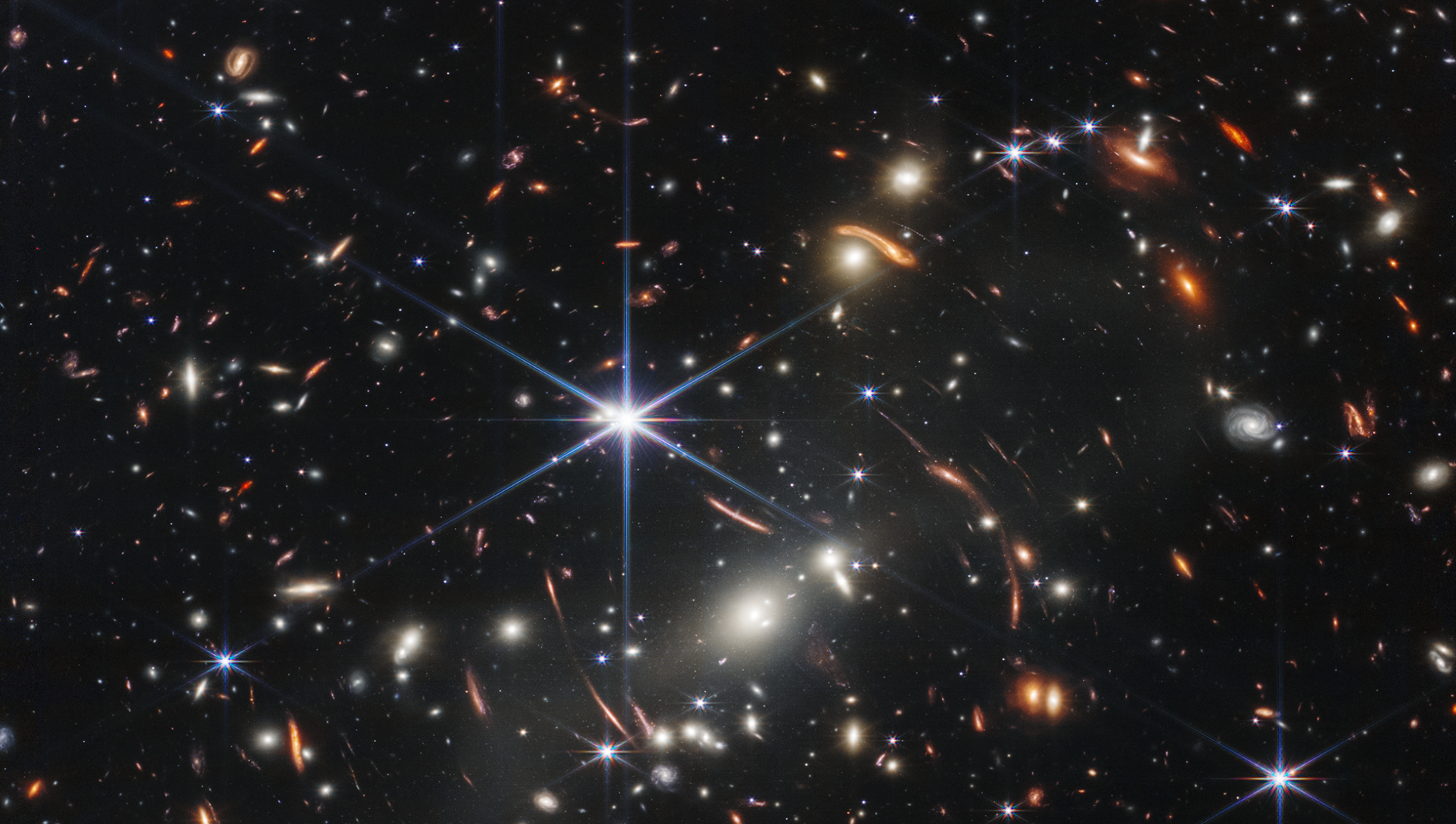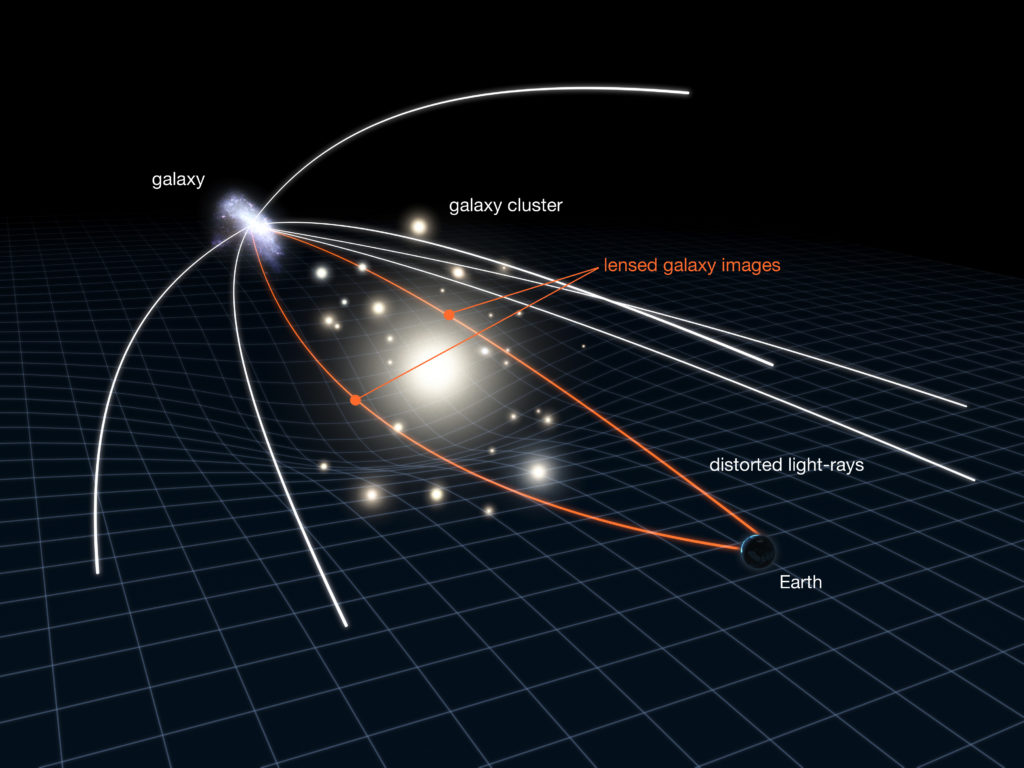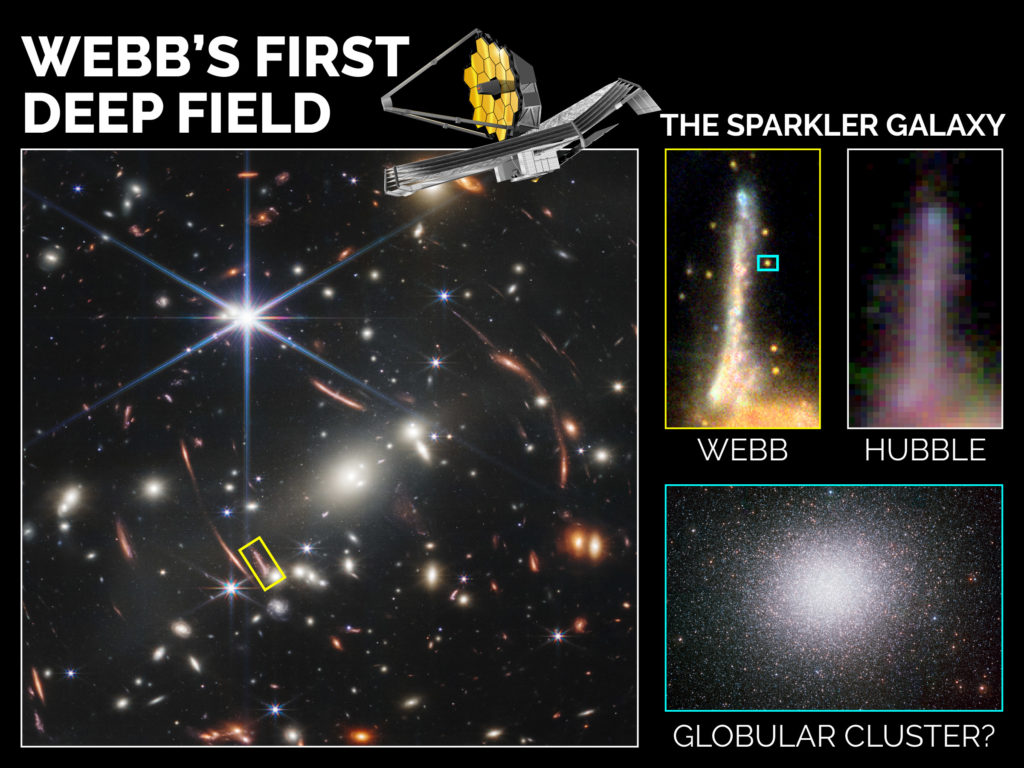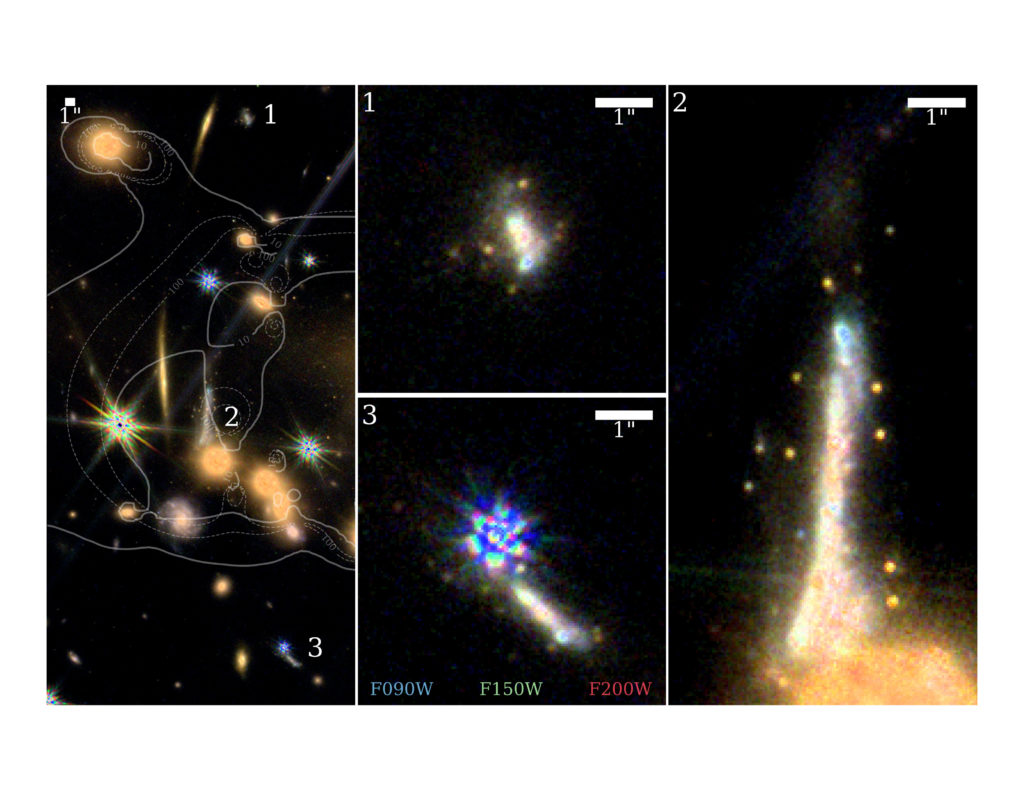
Webb reveals a galaxy sparkling with the universe’s oldest star clusters
TORONTO, Sept. 29, 2022 – Using the James Webb Space Telescope (JWST), researchers from the CAnadian NIRISS Unbiased Cluster Survey (CANUCS) team, including York University, have identified the most distant globular clusters ever discovered. These dense groups of millions of stars may be relics that contain the first and oldest stars in the universe.
The early analysis of Webb’s First Deep Field image, which depicts some of the universe’s earliest galaxies, is published today in The Astrophysical Journal Letters.

“Globular clusters are quite mysterious. They orbit the Milky Way and other galaxies, however, we have little idea where they come from,” says study co-author Associate Professor Adam Muzzin of York University’s Faculty of Science. “With the James Webb Space Telescope, we were able to see incredibly far into the past, much farther than we’ve ever been able to see before — and what we saw was spectacular.”

York PhD student Ghassan Sarrouh, also a co-author on the research, says “In this case, we were able to identify several globular clusters, collections of ancient stars, far beyond our Milky Way some nine billion light years away when the universe was about a third of its current age. It’s a really exciting and significant finding.”
The research team looked at one galaxy in particular to understand what was happening around it.
“JWST was built to find the first stars and the first galaxies and to help us understand the origins of complexity in the universe, such as the chemical elements and the building blocks of life,” says Lamiya Mowla, Dunlap Fellow at the Dunlap Institute for Astronomy & Astrophysics at the University of Toronto and co-lead author of the study. “This discovery in Webb’s First Deep Field is already providing a detailed look at the earliest phase of star formation, confirming the incredible power of JWST.”
In the finely detailed Webb’s First Deep Field image, the researchers zeroed in on what they’ve dubbed “the Sparkler galaxy,” which is nine billion light years away. This galaxy got its name for the compact objects appearing as small yellow-red dots surrounding it, referred to by the researchers as “sparkles.” The team posited that these sparkles could either be young clusters actively forming stars — born three billion years after the Big Bang at the peak of star formation — or old globular clusters. Globular clusters are ancient collections of stars from a galaxy’s infancy and contain clues about its earliest phases of formation and growth.
From their initial analysis of 12 of these compact objects, the researchers determined that five of them are not only globular clusters but among the oldest ones known.

“Looking at the first images from JWST and discovering old globular clusters around distant galaxies was an incredible moment, one that wasn’t possible with previous Hubble Space Telescope imaging,” says Kartheik G. Iyer, Dunlap Fellow at the Dunlap Institute for Astronomy & Astrophysics at the University of Toronto and co-lead author of the study. “Since we could observe the sparkles across a range of wavelengths, we could model them and better understand their physical properties, like how old they are and how many stars they contain. We hope the knowledge that globular clusters can be observed at from such great distances with JWST will spur further science and searches for similar objects.”
The Milky Way galaxy has about 150 globular clusters, and how and when exactly these dense clumps of stars formed is not well understood. Astronomers know that globular clusters can be extremely old, but it is incredibly challenging to measure their ages. Using very distant globular clusters to age-date the first stars in distant galaxies has not been done before and is only possible with JWST.

Until now, astronomers could not see the surrounding compact objects of the Sparkler galaxy with the Hubble Space Telescope (HST). This changed with JWST's increased resolution and sensitivity, unveiling the tiny dots surrounding the galaxy for the first time in Webb’s First Deep Field image. The Sparkler galaxy is special because it is magnified by a factor of 100 due to an effect called gravitational lensing — where the SMACS 0723 galaxy cluster in the foreground distorts what is behind it, much like a giant magnifying glass. Moreover, gravitational lensing produces three separate images of the Sparkler, allowing astronomers to study the galaxy in greater detail.
“Our study of the Sparkler highlights the tremendous power in combining the unique capabilities of JWST with the natural magnification afforded by gravitational lensing,” says CANUCS team lead Chris Willott from the National Research Council’s Herzberg Astronomy and Astrophysics Research Centre. “The team is excited about more discoveries to come when JWST turns its eye on the CANUCS galaxy clusters next month.”
The researchers combined new data from JWST’s Near-Infrared Camera (NIRCam) with HST archival data. NIRCam detects faint objects using longer and redder wavelengths to observe past what is visible to the human eye and even HST. Both magnifications due to the lensing by the galaxy cluster and the high resolution of JWST are what made observing compact objects possible.

The Canadian-made Near-Infrared Imager and Slitless Spectrograph (NIRISS) instrument on the JWST provided independent confirmation that the objects are old globular clusters because the researchers did not observe oxygen emission lines — emissions with measurable spectra given off by young clusters that are actively forming stars. NIRISS also helped unravel the geometry of the triply lensed images of the Sparkler.
JWST will observe the CANUCS fields starting in October 2022, leveraging JWST data to examine five massive clusters of galaxies, around which the researchers expect to find more such systems. Future studies will also model the galaxy cluster to understand the lensing effect and execute more robust analyses to explain the star formation histories.
Collaborating institutions include Saint Mary’s University and institutions in the United States and Europe. The research was supported by the Canadian Space Agency and the Natural Sciences and Engineering Research Council of Canada.
-30-
York University is a modern, multi-campus, urban university located in Toronto, Ontario. Backed by a diverse group of students, faculty, staff, alumni and partners, we bring a uniquely global perspective to help solve societal challenges, drive positive change and prepare our students for success. York's fully bilingual Glendon Campus is home to Southern Ontario's Centre of Excellence for French Language and Bilingual Postsecondary Education. York’s campuses in Costa Rica and India offer students exceptional transnational learning opportunities and innovative programs. Together, we can make things right for our communities, our planet, and our future.
Media Contact:
Sandra McLean, York University Media Relations, 416-272-6317, sandramc@yorku.ca
